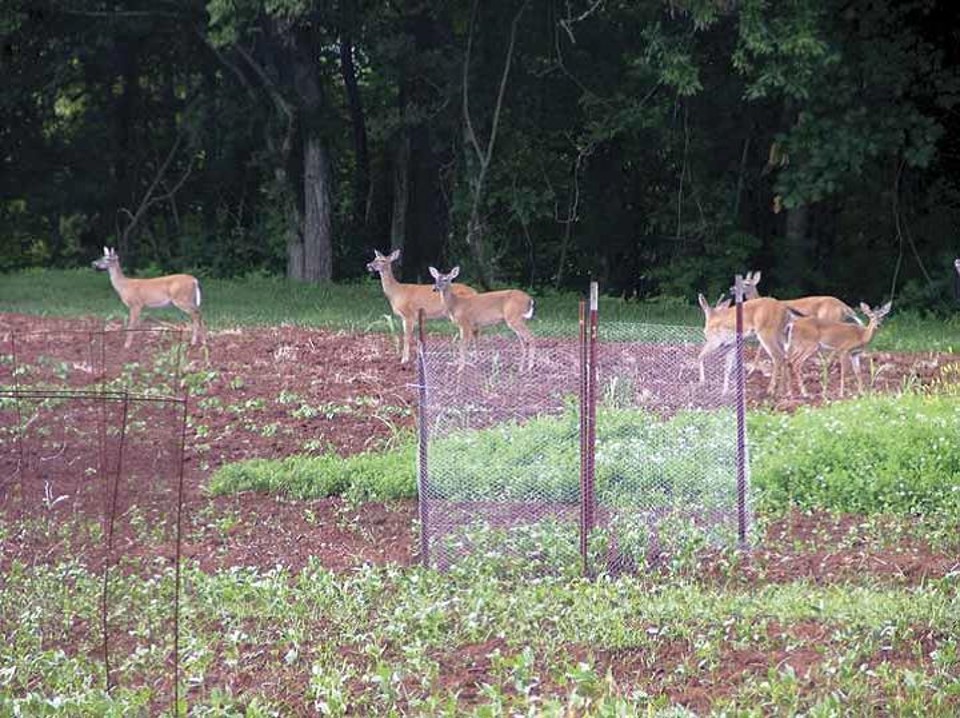You spend a lot of time and money preparing for deer hunting season. One of the most popular tools hunters utilize are winter food plots. Food plots typically consist of cool-season small grains and legumes such as clovers. These are planted in the fall to attract deer, to hopefully keep them in and around the areas to be hunted. While these food plots are typically planted for white tailed deer in our area, they also provide benefit to many other species of wildlife.
Hopefully you followed the major steps for producing a successful plot:
Soil testing
Proper liming
Proper fertilization
Selection of recommended varieties
Inoculation of legumes
In the Florida Panhandle, the game is on! Deer rut is just beginning. Below are the three top issues/questions I receive about food plots this time of year.
- “My plot is not growing.”
- “I fertilized my plot well, but it is not the dark green color that I expected.”
- “My grass is turning yellow and looks like it is dying.”
Let’s look at some possibilities that could generated these three concerns.
#1. Assuming everything has been done to ensure a successful food plot, your food plot may be growing more than you think. Deer and other wildlife may be feeding on your food plot to the point that it appears not to be growing. By putting a “deer excluder” (a small, anchored, circular fence, figure 1) in your plot you can get a better idea of how much growth is actually occurring. The “excluder” prevents the deer from feeding in a specific area, which prevents feeding activity in this small area as the photo below shows. The problem may not be that you planted the wrong crops or mismanaged them. It may just be you need to plant a larger area to meet the demand of your deer population.

Figure 1. “Excluder” Note: Include exclusion cages at planting time. Feeding pressure can greatly effect plant growth during establishment. Having cages present will help you determine whether or not slow establishment is actually a plant problem. Having the cages out early also gives the deer more time become accustomed to them.
#2. Think back, did you pull a soil sample? If so, what was the pH and what was the lime recommendation for the sample? Did you apply the recommended amount? Lime is one of the least expensive components of a successful food plot. Too low or too high of a pH can greatly effect the availability of the nutrients you apply (figure 2). When nutrients are unavailable (due to inappropriate pH) plant growth is limited even if you apply fertilizer. Always address pH issues before spending money on fertilizer.

Figure 2. The bars on the figure represent nutrient availability at given pH ranges; wider bar indicate greater availability. All plants have a specific, preferred pH, with 6-6.5 being a fairly common target for cool season forages.
#3. Did you plant a University recommended variety? You will find some varieties and/or blends on the market locally contain cultivars not recommended for our area. Specific varieties are recommended because they are well adapted to our area and have been shown to consistently perform well in our environment. Even if recommended varieties are used, there are still diseases that can cause problems. Two diseases of note are Barley Yellow Dwarf Virus and a new strain of crown rust. Refer to UF/IFAS A Walk on the Wild Side: 2019 Cool-Season Forage Recommendations for Wildlife Food Plots in North Florida for a complete list of recommendations.
For additional information on food plot management please refer to Effective Food Plots for White-Tailed Deer in Alabama.
If you are having problems with your food plots this season these are just a few things to consider before planting next year. Contact your local county extension agent before planting time next fall to get recommendations on the best varieties and management for cool-season forages for your area.
- 54th Annual Santa Rosa County Farm Tour Goes Virtual - December 11, 2020
- Video Tour of the 2020 Santa Rosa County Peanut Variety Trial - October 9, 2020
- Giant Salvinia – A Highly Invasive Aquatic Plant You Don’t Want Growing in Your Pond - May 29, 2020
